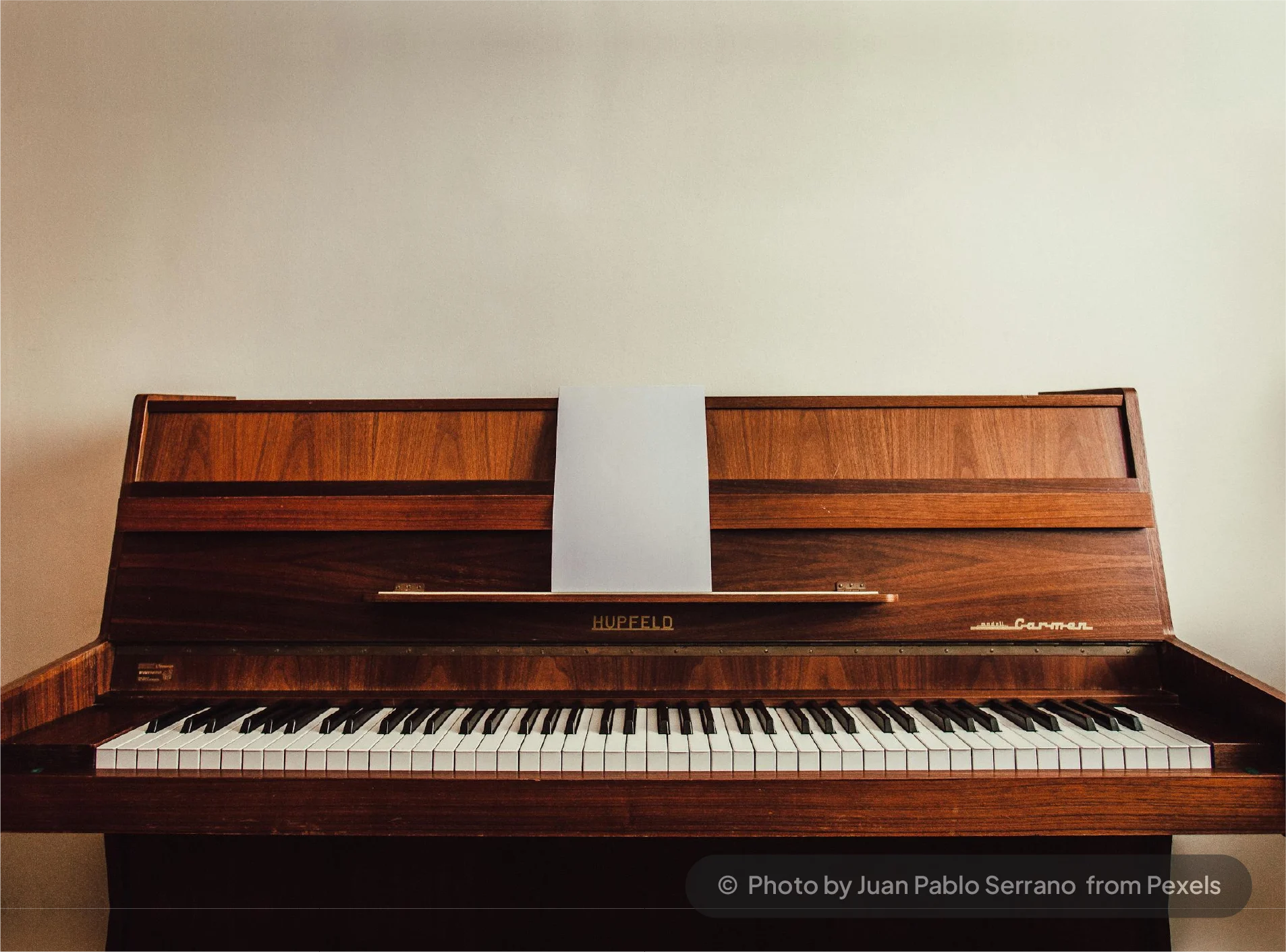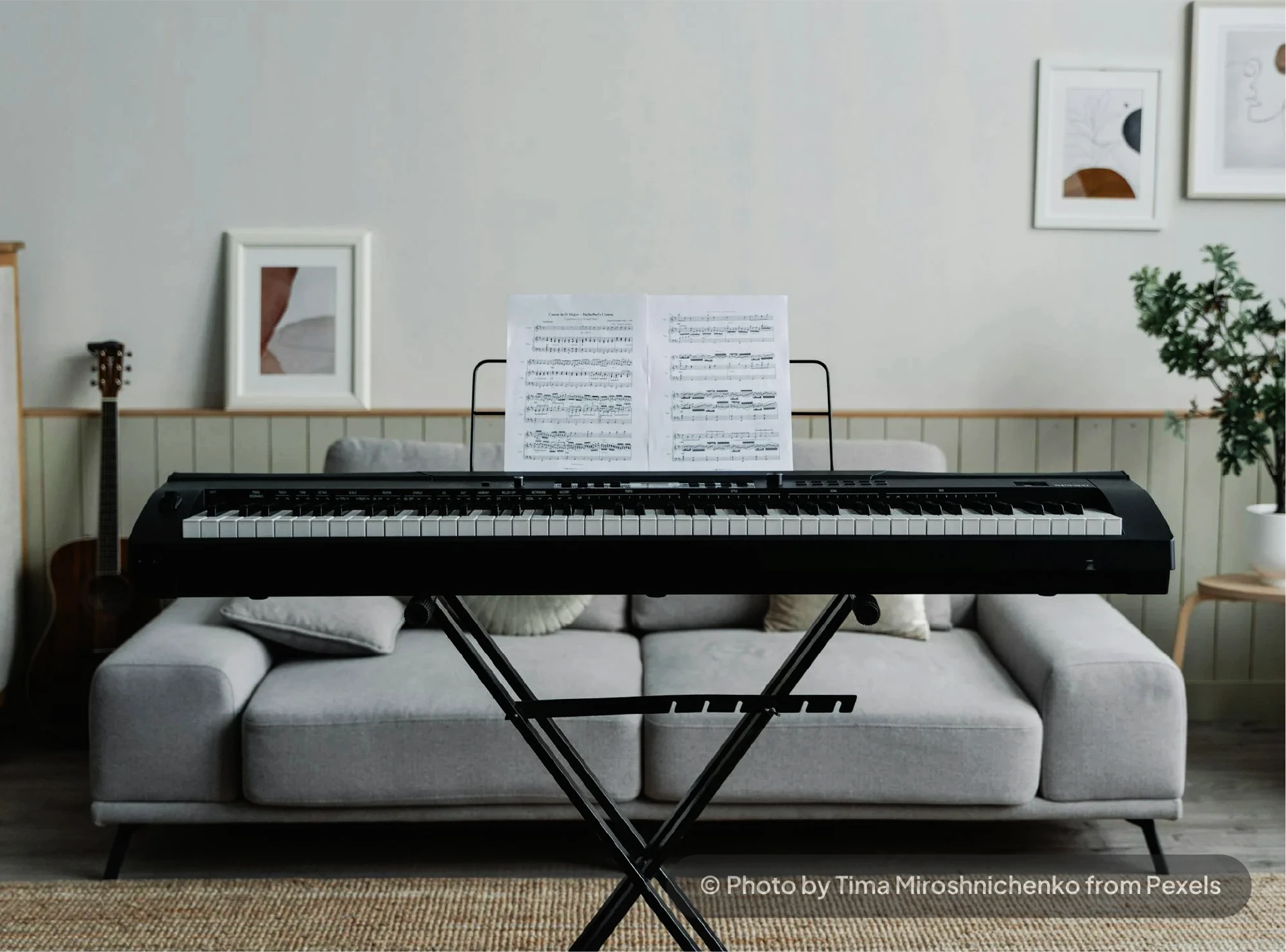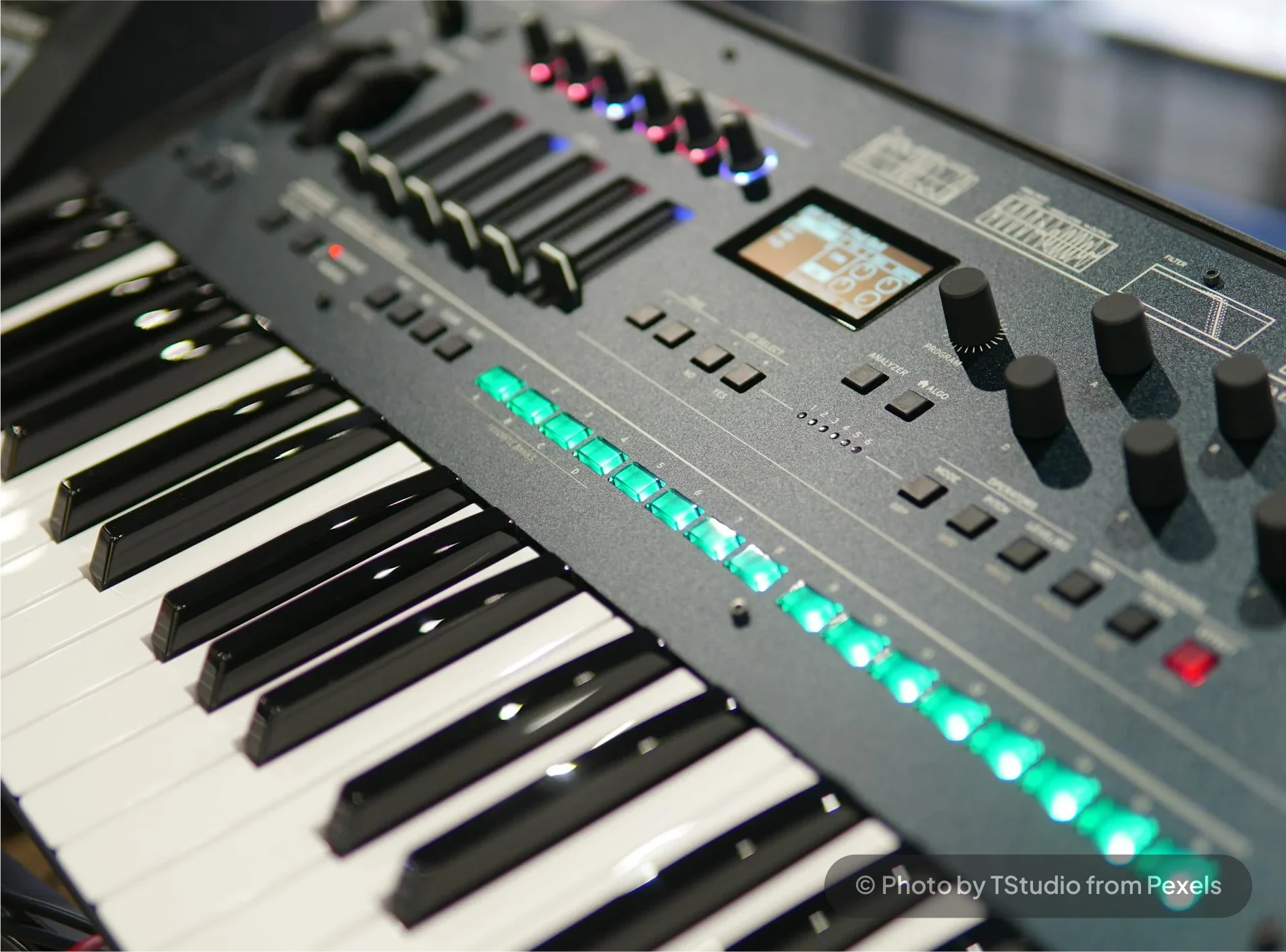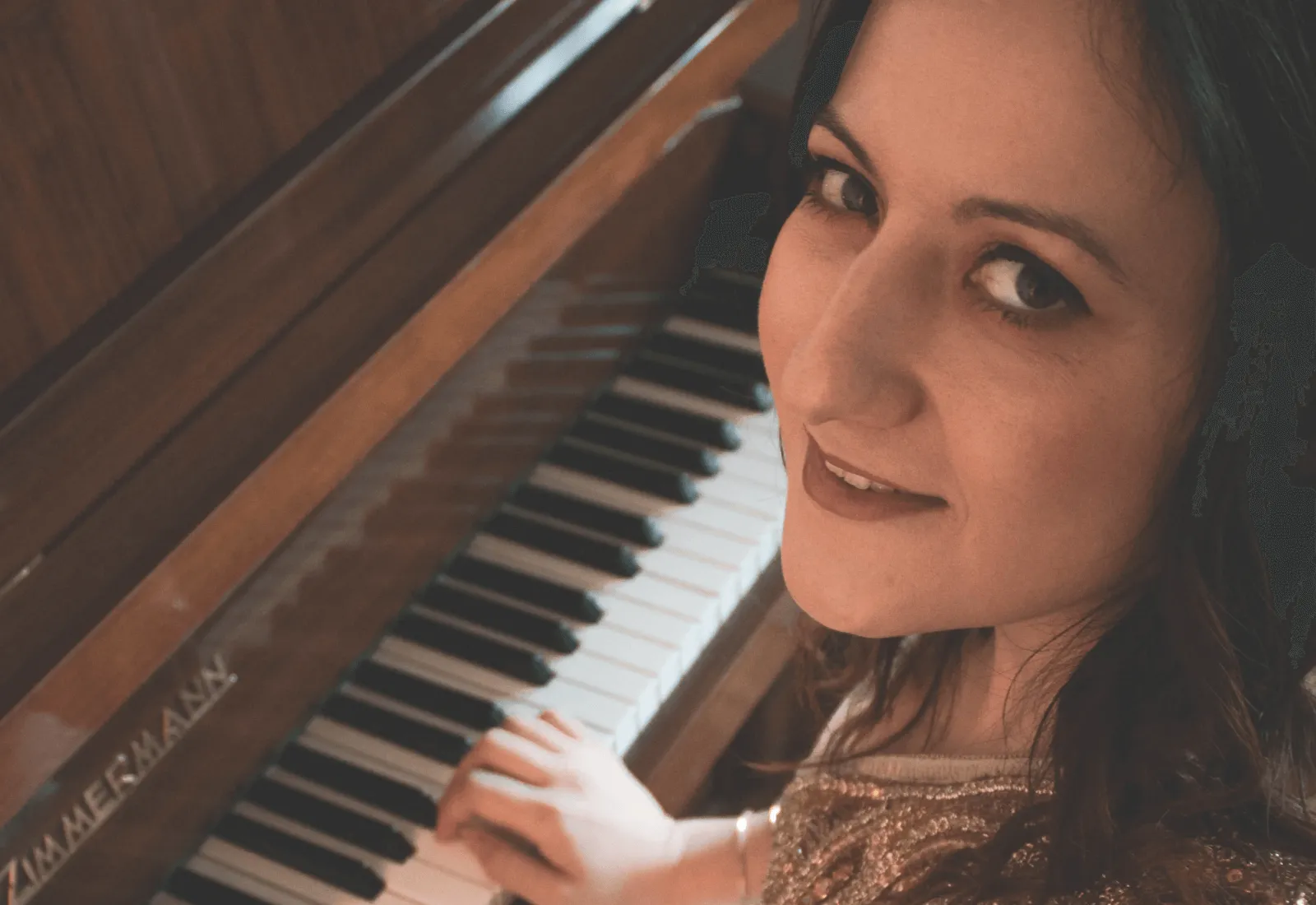Different Types of Pianos: Their Features, Pros, and Cons
Whether you’re a beginner, a performer, or a composer, knowing the different types of pianos can guide you in finding the perfect instrument for your musical journey. When people say ‘piano,’ they often imagine the same instrument — but in reality, there are piano varieties, each with its own design, tone, and purpose.
3 Different Types of Pianos
1. Grand Pianos: The Pinnacle of Musical Grandeur

Among the different types of pianos, grand pianos are often considered the monarch - the instrument of royalty, the best among all of them. Grand Pianos produce a dynamic range, only a few other instruments can match, making it both visually appealing and acoustically epic. The grand piano is a striking presence in music halls, recording studios, and luxury residences.
Features of a Grand Piano:
A grand piano has a horizontal frame and strings, and the lid opens upward. The horizontal setup of the strings allows gravity to interact with the mechanism, resulting in faster repetition and more tonal control. Grand pianos range in size from baby grands (about 5 feet long) to full concert grands (up to 9 feet or more). The size of the piano determines not only the visual perception, but also the depth and projection of sound.
Pros of Grand Pianos:
- Superior sound quality and deep tone resonance.
- Faster key action because of the horizontal string layout.
- Aesthetic appeal: a famous work of music and art.
- Has the broadest dynamic range among all types of pianos.
Cons of Grand Pianos:
- Expensive when compared to other piano varieties.
- Requires significant space.
- Requires professional movement and periodic maintenance.
2. Upright Pianos: Portable Design for Everyday Music
 Upright pianos are the unsung heroes of pianos. For individuals who enjoy the appeal of an acoustic piano but are constrained by space or expense, upright pianos are an excellent alternative. Within the upright family, there are two additional types of pianos to consider: Console and Studio pianos.
Upright pianos are the unsung heroes of pianos. For individuals who enjoy the appeal of an acoustic piano but are constrained by space or expense, upright pianos are an excellent alternative. Within the upright family, there are two additional types of pianos to consider: Console and Studio pianos.
Console pianos usually stand between 40 to 44 inches tall and ideal for home use. They frequently include beautiful cabinets and generate a nice tone, but they're not as deep or resonant as larger versions.
Studio pianos are slightly taller, often 45 to 48 inches, and are designed for professional settings such as music studios and schools. They offer better action and a richer sound than console pianos.
Choosing between a console and a studio piano is often determined by your available space, price, and level of concern for tone depth and touch response.
Features of Upright Pianos:
Unlike grand pianos, upright pianos use a vertical frame with strings. This design allows them to use less floor space while delivering a satisfying acoustic sound. Usually standing three to five feet tall, they are perfect for smaller spaces, teaching studios, and at-home practice. Upright pianos use a slightly different action mechanism than grands, but modern advances have diminished the performance disparity between the two.
Pros of upright pianos:
- Space-saving design that readily fits into homes and flats.
- Less expensive than grand pianos.
- Warm, resonant sound perfect for teaching and casual playing.
- Easy to move and maintain.
Cons of upright pianos:
- Less refined sound than grand pianos.
- Action might not be as responsive as grand.
- Limited dynamic range for professional-level performance.
3. Digital Pianos: Technology Meets Tradition
 Digital pianos are one of the most popular types of pianos and keyboards today, particularly among beginners and tech-savvy performers. They appeal to both modern musicians and beginners because they are portable, affordable, and feature cutting-edge technology. One of the most significant advantages of digital pianos is portability. They're lighter, less expensive, and often come with built-in metronomes, recording capabilities, and headphone outputs, making them ideal for practising peacefully at home.
Digital pianos are one of the most popular types of pianos and keyboards today, particularly among beginners and tech-savvy performers. They appeal to both modern musicians and beginners because they are portable, affordable, and feature cutting-edge technology. One of the most significant advantages of digital pianos is portability. They're lighter, less expensive, and often come with built-in metronomes, recording capabilities, and headphone outputs, making them ideal for practising peacefully at home.
Features of Digital Pianos:
Digital pianos make use of sampling technology to mimic the sound of acoustic pianos. They exist in a variety of sizes, from full-size consoles to portable keyboards. Many piano varieties have weighted keys that produce the sensation of an acoustic instrument. Digital pianos frequently have extra features, including headphone outputs, recording capabilities, and a range of instrument voices besides the piano.
Pros of digital pianos:
- Highly portable and compact.
- Volume control and headphones for silent practice.
- Various sound settings and recording functions.
- Low maintenance (no tuning required)
Cons of digital pianos:
- It could not be as expressive or have the same rich tone as an acoustic piano.
- Feel and key responses may differ across models.
- Limited recognition for purists who need traditional sounds.
Other Notable Piano Varieties
While grand, upright, and digital pianos rule the landscape, there are other different types of pianos:
1. Hybrid Pianos
Hybrid pianos combine the best of acoustic and digital technologies, giving players the feel of a classic piano with the flexibility of modern electronics. Companies like Yamaha and Kawai have been at the forefront of this market, creating instruments that appeal to both innovators and traditionalists.
2. Stage Pianos
Stage pianos are lightweight, durable, and full of performance qualities. They are essential for gigging musicians who need reliability and variety on stage without affecting quality.
3. Keyboards
Keyboards are lightweight and portable, and they often have a variety of sounds featuring piano, organ, strings, and even drum rhythms. Many versions also have learning tools such as light-up keys and built-in instructional modes, making them perfect for people just beginning their musical adventure. They are an excellent introduction for folks who want to try out various types of pianos and keyboards without making a large initial investment.
4. Synthesizers
 Synthesizers are slightly more advanced. They allow musicians to generate and manipulate sounds electronically, making them popular in genres such as electronic, pop, and experimental music. While not a direct replacement for a regular piano, synthesizers provide a plethora of musical possibilities, allowing for limitless creativity.
Synthesizers are slightly more advanced. They allow musicians to generate and manipulate sounds electronically, making them popular in genres such as electronic, pop, and experimental music. While not a direct replacement for a regular piano, synthesizers provide a plethora of musical possibilities, allowing for limitless creativity.
Choosing Between Different Types of Pianos
Now that you know the major types of pianos and keyboards, the big question is: which one is right for you? Choosing a piano is a very personal decision that is driven by your available space, finances, artistic goals, and aesthetic preferences. If you want grandeur and the best sound quality, a grand piano is an obvious choice. An upright piano can be a reliable companion for individuals who want to strike a balance between quality and space. Meanwhile, beginners, tech enthusiasts, and those on a tight budget may find digital pianos an excellent introduction to the world of music.
Understanding the different types of pianos allows you to select an instrument that seems more like an extension of your spirit than a piece of furniture.
How to Start Learning Piano?
Learning how to play the piano can be like exploring a fascinating new universe as a whole. Whether you pick a grand, upright, or digital piano, the first step is just becoming comfortable with your instrument. Familiarizing yourself with the keys, learning basic music theory, and developing hand coordination are all critical in the beginning stages.
Today, with so many resources available, you can personalize your learning experience to your preferences. Some students thrive in traditional in-person sessions with an instructor to guide them, while others enjoy the flexibility of online piano classes.
Wrap Up - Piano Types
The world of pianos is as rich and varied as the music they produce. There's an instrument for every type of artist, from majestic grand pianos that dominate performance halls to space-saving upright versions ideal for snug homes and ever-evolving digital pianos that merge tradition and technology. Understanding the many sorts of pianos, their features, and each of their pros and cons allows you to make an informed decision, whether you're just starting out or looking to upgrade. Whatever option you choose, the most important thing is the music and passion the piano brings into your life.
The upright piano (also called a vertical piano) is the most popular type worldwide. It’s widely chosen because: - It’s compact and fits easily in homes, schools, and studios. - More affordable than grand pianos. - Produces a rich tone suitable for both beginners and advanced players.
The four main types of vertical (upright) pianos are: Spinet Piano, Console Piano, Studio Piano, and Upright Piano.
There are 3 different types of pianos: Upright (Spinet, console, Studio, professional), Grand (Petite, Medium, Parlor, Ballroom Concert), Electric, Electronic and Digital.














